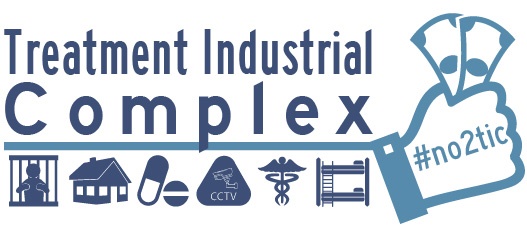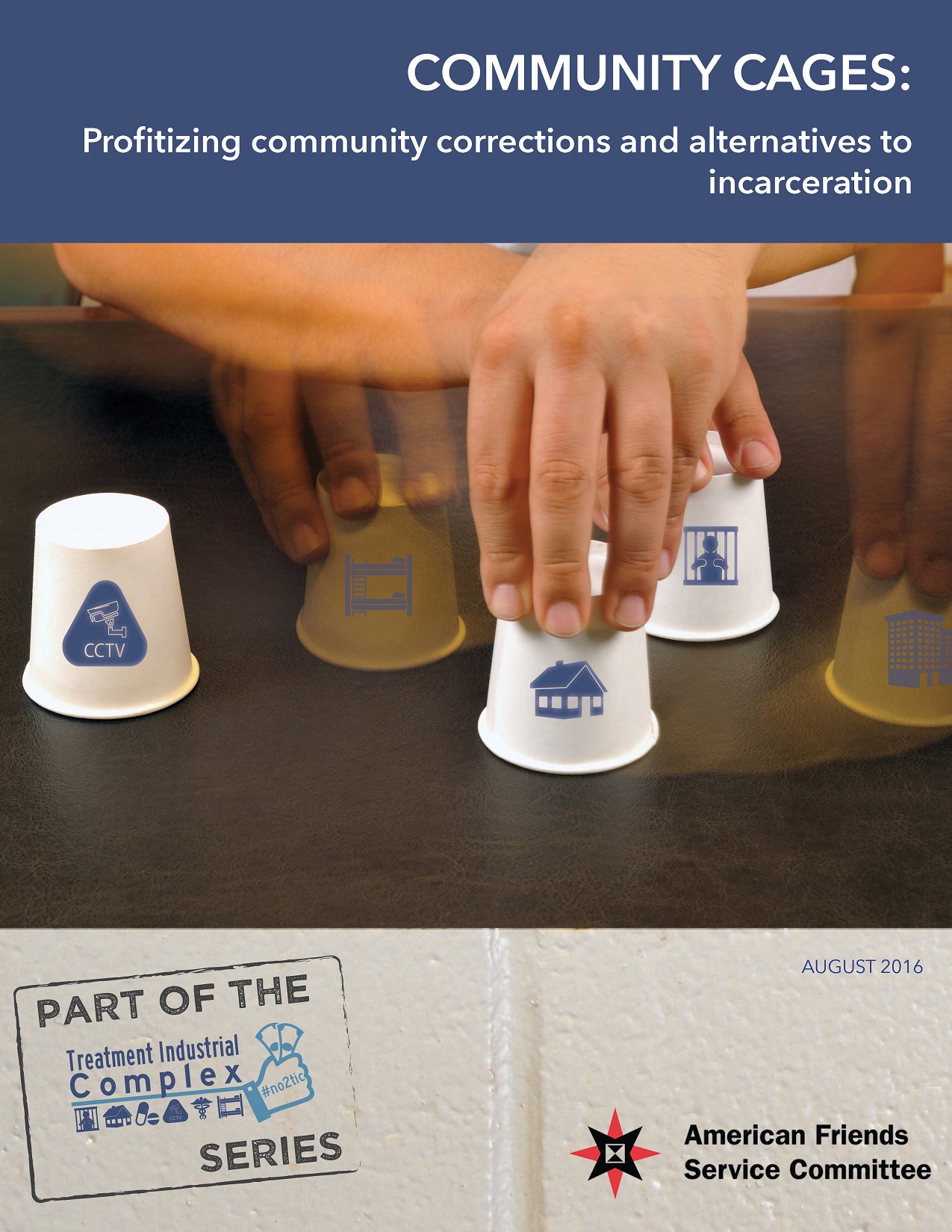 AFSC Arizona has released their newest publication, Community Cages: Profitizing Community Corrections and Alternatives to Detention, an in-depth analysis of the community corrections segment of the Treatment Industrial Complex.
AFSC Arizona has released their newest publication, Community Cages: Profitizing Community Corrections and Alternatives to Detention, an in-depth analysis of the community corrections segment of the Treatment Industrial Complex.
As states pursue sentencing reform efforts to reduce prison populations and the federal government continues to grapple with comprehensive immigration reform, the private prison industry faces pressure to adapt to a shifting penal landscape that is moving towards alternatives to incarceration. In response, the private prison industry is re-branding itself as a humanitarian provider of rehabilitation services, and expanding into community corrections and other “alternatives.”
Community corrections refers to “front-end” alternatives to incarceration, such as probation, home arrest, diversion programs, and “back-end” re-entry programs such as parole, halfway houses, and work release centers.
Nearly two-thirds of people involved in the criminal justice system are not held in prison or jail, but are instead monitored via community correction programs. At the end of 2014, more than 4.7 million adults were under probation or parole. This represents a huge untapped market for privatization.
In this report, we examine four different components of community corrections that are being aggressively privatized:
- Electronic Monitoring through the use of GPS ankle monitors and other mobile surveillance technology
- Day Reporting Centers for individuals to “check in” and/or participate in rehabilitative programs and services
- Intermediate Sanctions Facilities as an alternative to revocation to prison for technical violations of the terms of probation or parole
- Residential Reentry Centers, more commonly known as halfway houses.
This development poses a serious threat to the movement to end mass incarceration. Due to their extensive economic and political influence, corporations such as GEO and CCA are able to exploit reform efforts for their own financial gain. They are able to out-compete smaller, community-based nonprofits to get contracts due to their immense political and economic influence.
The pursuit of profit undermines the movement’s goals of shrinking the size and scope of the criminal punishment system. The alternatives to incarceration movement should be resulting in a strong downward push: Reducing the number of people incarcerated, but also moving people more quickly off all forms of supervision. In effect, there should be a substantial number of people, based on risk assessments and other factors, who are completely free of the system and allowed to resume their lives.
However, the opposite appears to be happening. As prisons and detention centers fall out of favor, the number of people being placed on electronic monitoring and in post-release programs appears to be swelling. This trend raises serious concerns about “net-widening”—there is tremendous financial incentive for these companies to ensnare as many individuals as possible and keep them under surveillance or control for as long as possible.
This report offers an in-depth analysis of these issues, making the strong case for a nationwide examination of these trends to ensure that reform efforts are truly meeting their goal of providing alternatives to incarceration, not incarceration by another name.
To read the full report, click here: Community Cages
Categories: AFSC in the News, News & Updates, Privatization
